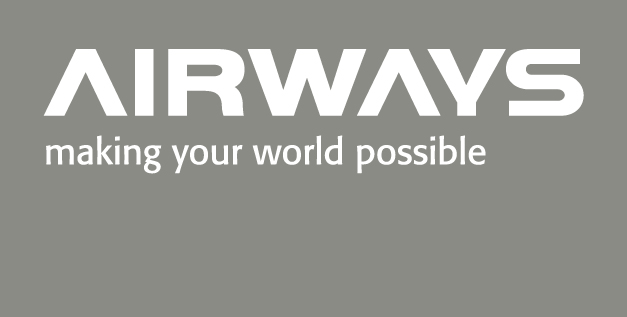Airways New Zealand and Barco deliver world-first in collaborative integrated flow and arrival management

A world-first deployment of an integrated flow management and arrival management system, which will save airlines tens of millions of dollars in fuel by significantly reducing airborne delays and optimizing flight profiles, is now in operation for flights into Auckland, New Zealand.
Airways New Zealand has partnered with global air traffic management software expert Barco Orthogon GmbH to develop and deliver a world-class Collaborative Flow Manager (CFM) solution, which is now working to eliminate airborne air traffic bottlenecks and holding patterns at one of Australasia’s busiest international airports.
The integration and deployment of Barco’s OSYRIS Arrival Manager (AMAN) into Airways’ Collaborative Flow Manager has resulted in a sophisticated and world-leading combined flow and queue management solution, which is now a global showcase for ATM efficiency. With this solution, airlines interact directly with the system to prioritize their flights according to their own business needs – subject to available slots, runway capacity and trajectory predictions updated by the system in real time.
Airways and Barco signed an agreement in June 2011 to jointly develop and market the integrated CFM/AMAN solution. With the solution now operational for Auckland Airport, it is proven and ready for deployment to the global aviation industry, to achieve coordinated flow management and arrival sequencing of flights into capacity constrained airports.
“By working closely with Barco and our airlines, we’ve developed and implemented a system that’s delivering real savings, both financial and environmental, without impacting on safety and service delivery,” says Airways Chief Operating Officer Pauline Lamb.
“With our CFM/AMAN solution in place we now have airlines starting to focus on arriving on time rather than departing on time. This system is saving airlines millions of dollars in fuel, reducing CO₂ emissions, and making delays insignificant, if compared alongside European measures,” Mrs Lamb says.
“To include airline preferences in queue management is without doubt a major milestone for our OSYRIS Queue Management product line. We are pleased that teaming with Airways has achieved such great results and benefits for both ANSPs and airlines,” comments Frank Köhne, CEO and Managing Director of Barco Orthogon GmbH.
How do CFM and AMAN work?
The combined CFM/AMAN solution maximises use of available capacity at airports and reduces controllers' workload by improving traffic flow and automatically sequencing arriving aircraft. Aircraft fly more efficiently due to planned and predictable flight paths, and airborne delays are significantly reduced – lowering fuel use and CO₂ emissions.
In simple terms, the CFM component manages airline requirements prior to take-off to suit their business needs. CFM matches airlines’ scheduling needs with capacity at the destination, and coordinates departure and arrival slots to minimise airborne delays. Prior to top of descent, the AMAN component calculates target landing times to ensure the most efficient speed and energy profiles for aircraft arriving into Auckland, based on their predicted trajectories and the available runway capacity at that period.
Most arrival manager systems issue a single standard arrivals profile for every aircraft. Airways-Barco CFM integrated with AMAN delivers a significant benefit compared to other systems – it allocates an optimum standard arrival and approach profile for each aircraft, matched to that aircraft’s performance. The profile is designated before the aircraft reaches top of descent, to ensure the optimum descent profile can be flown.
Air traffic controllers are presented with a linear display of the optimum aircraft sequence for all inbound aircraft, taking into account adjustments for arrival procedures. Because the monitoring process is continuous, the CFM/AMAN solution is able to update airlines’ and controllers’ information more regularly and with greater accuracy.
The results
“With CFM and AMAN we’re already making big inroads to reducing airborne and ground delay at Auckland, delivering results through an innovative and collaborative approach,” Mrs Lamb says.
Captain David Morgan, Air New Zealand Chief Flight Operations and Safety Officer, says the addition and integration of AMAN means that Airways New Zealand is now able to further optimize the arrival for airborne aircraft.
“With a high level of airline collaboration and compliance, CFM delivered a dramatic reduction in airborne delays. The new CFM/AMAN system, combined with the use of continuous descents and track shortening RNP AR arrivals, means Airways New Zealand is well on the journey to creating a truly optimum terminal arrival experience,” Captain Morgan says.
In Auckland, airborne delay* has reduced from an average of 3.5 minutes per flight in 2007 before CFM was introduced, to an average of 23 seconds per flight in 2013 – an 89% reduction.
Airlines arriving into Auckland Airport are experiencing an additional 2-4% reduction in delays as a direct result of the AMAN deployment into the CFM system. This will increase as the system is fine-tuned over the coming months.
* In New Zealand, airborne delay is measured by comparing the most efficient flight that could be flown on the flight path filed by the airline, with the actual flight flown – from take-off to landing.

.png)
.jpg)






Comments
There are no comments yet for this item
Join the discussion